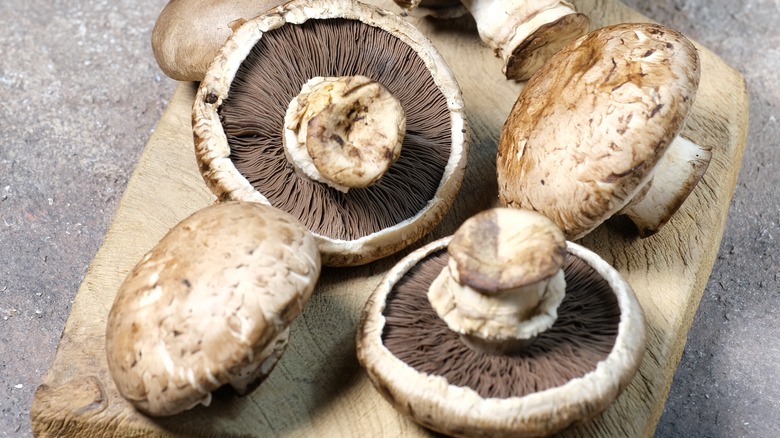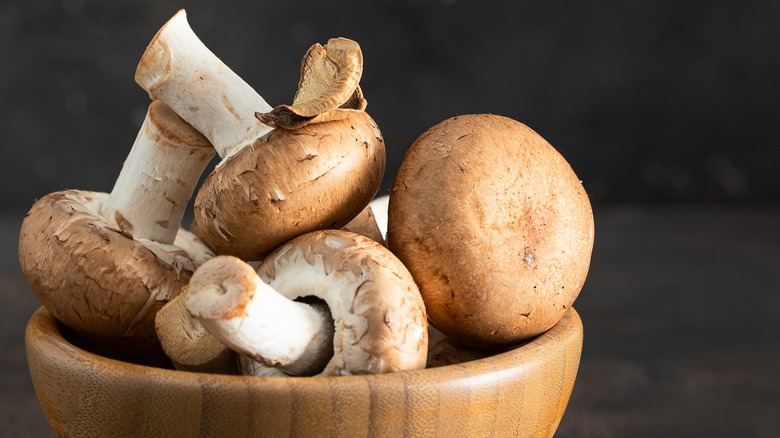Why The Gills Of Portobello Mushrooms Are Often Removed
Whether you're preparing vegan carne asada or full-on portobello steaks, portobello mushrooms are a go-to in vegetarian cooking. Thanks to their meat-like texture and flavor-absorbing abilities, the fungi are ideal for recreating all sorts of meat-free recipes. Additionally, their large size allows them to be sliced into thin or thick cuts, making their size customizable in your sandwiches, tacos, fajitas, and more.
But, even in all of their glory, portobello mushrooms come with one unique characteristic that some other types of edible fungi do not: Gills. If you've cooked with portobellos in the past, there's no doubt you've noticed the thin, soft, brown gills underneath the mushrooms' large caps. Depending on the size of the portobello, these gills can look pretty intimidating. Rest assured, they pose no danger to you if you eat them (via Mashed) — but, depending on your aesthetic preferences, you may want to remove them anyway.
Removing portobello gills
To be clear, the soft brown lined gills found underneath the caps of large portobellos — otherwise known as the grown-up cremini — are completely edible. While some people say they have a bitter taste, Fool Proof Living confirms that, after preparing portobellos both with and without their gills, they distinguished no changes in flavor. Really, the only reason you might want to remove them would be because, truthfully, they don't look too appetizing. Frankly, this is a legitimate observation, considering that the gills tend to hide dirt and debris inside them. So, if you're not going to be removing the gills, make sure that you're cleaning them thoroughly.
However, if you side more with the argument that it's better to be safe than sorry, Cuisine at Home recommends skipping the cleaning and scraping them out with a teaspoon instead. One benefit to removing the gills, besides the assurance of cleanliness, is that their dark brown color won't bleed into the rest of your food while cooking. While this technically won't alter the taste of your meal, it will make it look significantly less colorful — which, according to a 2015 study published in the journal "Flavour," is your brain's single most important element in setting expectations for how our food should taste.

